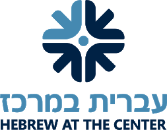Exploring Judaic Texts using P’shat, D’rash and Design Thinking
March 31, 2016 by
What do a gift-giving bridge, a clay heart, a ring and an altar all have in common? If you had the chance to step into the JPDS-NC Design Lab in the recent few weeks or overheard the fourth graders talking about their ‘Judaic Studies project’, you might know that each of those objects were parts of structures that the students in fourth grade created as a culmination of their first semester of Torah learning.
Throughout the first semester of the school year in Judaic Studies, the fourth graders focused on the Biblical characters Leah, Rachel, and Yaakov, particularly the challenges they faced and how they dealt with those challenges. The students analyzed these characters and events in both the p’shat (literal meaning of the text) and d’rash (Biblical exegesis), guided by the ‘Big Idea’, (Yaakov, Leah and Rachel each faced difficulty and responded to that difficulty in different ways) and Essential Question (What do their responses to challenges tell us about who they were and why they were chosen to be included among the אבות and אמהות, the matriarchs and patriarchs?). Throughout their studies, the students considered the significance of those challenges both in Biblical times and in their own lives, all the while deriving personal meaning from the ancient texts.
With a desire to push our students’ creative thinking to the maximum and reflect on their Torah learning in deep and innovative ways, Dafna Spear, Judaic Studies Teacher for Grades 3 and 4, and I created a Design Thinking challenge that would meet both of those aims: for the students to work collaboratively to build a physical structure which would represent the abstract challenges faced by Leah, Rachel, and Yaakov, and the ways in which they responded to those challenges.
The students rose to the challenge with aplomb. Curious and eager, they dove into the first step of the process: quick sketches or doodles of their ideal structures. The “Deep Dive” came next: the part of the process where the ‘real work’ of collaboration began! The students analyzed the initial sketches of each of the members of their group, listened to each other’s ideas, and asked probing questions of their group members in order to understand what their peers felt was important for their structures. After identifying the collective needs of the group, the students continued the process by generating ideas (akin to a collective brainstorm), which met the needs of the users (in this case, all of the members of their group). Prototyping followed next, with the students gathering materials and building their structures. The final element of the Design thinking process, reflection, allowed the students to consider their most significant successes and challenges throughout the process.
Outside of the Design Thinking process and back in our Judaic Studies classroom, the students utilized graphic organizers to assist them in composing three paragraph essays explaining the challenges faced by Rachel, Leah and Yaakov, how they responded to those challenges, and how both the challenges and responses by each of the characters were reflected in their structures. One student wrote “In my opinion, Yaakov faced the hardest challenge. The challenge that he faced was Esau trying to kill him. It is represented in our structure by 400 men…. Rachel’s challenge was a very different one. The challenge that she faced was Leah marrying Yaakov… the way she responded to her challenge was kindness and it’s represented by a clay heart.” With the writing piece complete, the students honed their presentation skills as they explained the meaning behind their structures to their classmates and adeptly fielded questions from their rapt audience.
When asked to describe this project in one word, the students shared that it was:
Creative: Because we had to use a lot of creativity in order to do this project.
Unique: Because everyone expressed themselves in their own way and no one else’s project was the same.
Weird: It is a big change compared to the other things we have done in Judaic Studies.
A Challenge: Because it was challenging to agree on ideas as a team and build it together, and also because most of the project is about challenges.
In closing, I asked the fourth graders if they thought that I should repeat this project with next year’s fourth graders, and they answered with a resounding ‘Yes!’ As one student reflected, “It (the project) gets you to think deeply and open your mind.” As educators at JPDS-NC, that is what we strive for on a daily basis. I and my fellow Judaic Studies teachers look forward to continuing to utilize both Judaic texts and the Design Lab to fully engage and expand our students’ depth of thought, collaborative spirit, and love of learning Torah!






